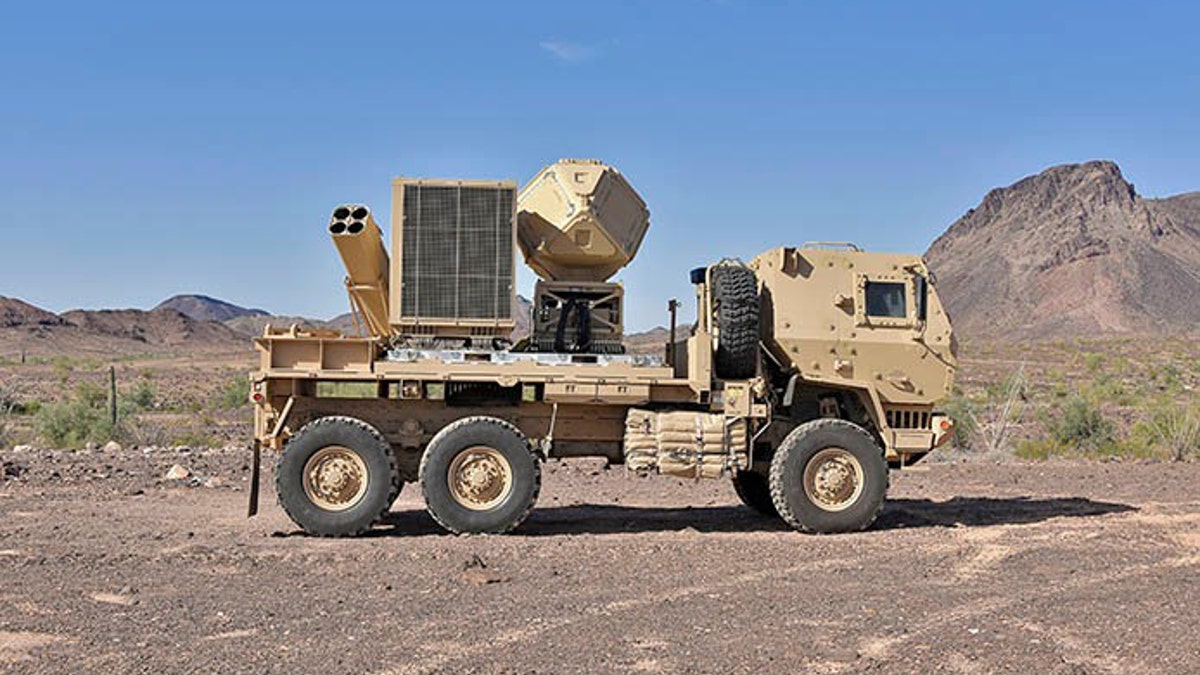Fox News Flash top headlines for May 12
Fox News Flash top headlines are here. Check out what's clicking on Foxnews.com.
The Army is working with industry partners to upgrade and expand its counter-drone fight by helping to bring new advanced technology to U.S. allied countries across the globe facing an increasingly complex threat. The effort includes industry moves to offer emerging counter-drone systems for international sales, the addition of advanced interceptors and emerging uses of AI -- all as part of a cutting-edge effort to destroy attacking drones.
Armored vehicle convoys maneuvering through mountainous terrain as part of a massive, coordinated combined arms ground attack, could easily be vulnerable to fast-appearing, close-in enemy drone attacks. Forward Operating Bases, often fighting without immediate air support, are also potentially susceptible to fast-approaching drone swarms. Dismounted, forward-moving infantry operating in small groups without armored vehicles or close-air support could be especially at risk of coordinated close-in, small drone attacks.
Enemy drones, even low-tech ones, are not only widely available but extremely dangerous to ground forces in today’s modern warfare threat environment. While many countermeasures already exist or are in rapid development, persistent innovation is now being prioritized by the Pentagon, in an effort to stay in front of adaptive enemies pursuing fast-expanding avenues of attack. The U.S. Army is now improving existing drone defense weapons and moving quickly to deploy new ones, such as interceptor missiles, networked ground sensors, laser weapons and EW (electronic warfare), among other things.
SOLDIERS USE AI TO FIRE PRECISION GRENADES, GUIDE DRONE ATTACKS

(Raytheon)
The Army and Raytheon are now accelerating development and deployment of an upgraded counter-drone weapons system designed specifically to address close-in small drone threats. The integrated counter-drone system uses a Ku band mobile, 360-degree ground radar called KuRFS -- in conjunction with a suite of specific countermeasures, called effectors. KuRFS can provide threat information for ground commanders who can then opt to use laser countermeasures, EW, High-Powered Microwave weapons or a kinetic energy interceptor missile-drone called Coyote Block 2. However, before any threat can be destroyed, it must first be identified or “seen.”
KuRFS began as an Urgent Operational Need request from the Pentagon to address an immediate and pressing need to counter enemy drones, rockets, mortars and other airborne threats -- including lower flying helicopters, Raytheon developers said.
“A complete c-UAS (Counter UAS) solution needs to be able to automatically detect the intrusion of potentially multiple UASs, identify their type and possible payload, and track their movement consistently inside the monitored area. We have a holistic end to end kill chain which includes early warning,” James McGovern, Vice President, Business Development, Mission Systems & Sensors, Raytheon Integrated Defense, told Warrior.
ARMY SOLDIERS USE 'MACBOOK'-SIZED TABLET TO OPERATE MULTIPLE SMALL DRONES
UAS stands for Unmanned Aerial System.
The now-deployed system, called Howler, uses KuRFS in conjunction with each of these potential effectors, including a Coyote Block 1 interceptor. Now, Raytheon has engineered a new, upgraded Coyote Block 2 effector with improved guidance, sensing and warhead technology.
McGovern described Block 2 as a “larger, optimized warhead with improved tracking detection, engine performance and warhead effectiveness.” Equipped with an advanced seeker and small warhead, Coyotes can launch from a range of locations, including fixed locations and armored vehicles on-the-move. While already in development with the U.S. Army, Coyote Block 2 has just been approved for international sales, as part of a strategy to help U.S. allies combat the growing small drone threat.
ARMY TO TEST AND SHOOT WEAPONS AT NEW MOBILE PROTECTED FIREPOWER PROTOTYPES
At the same time, while many medium, large and longer-range drone countermeasures have reached substantial levels of maturity, smaller vehicle attack drones, described as Group 1 to Group 3, present unique and still somewhat unresolved challenges. Drone swarms, for instance - such as commercially-available quadcopters - can be flown in groups to overwhelm radar systems, blanket areas with ISR or even themselves function as mini attack explosives or airborne IEDs.
CLICK HERE TO GET THE FOX NEWS APP
These small drone threat challenges are specifically addressed in the Army Air and Missile Defense Vision 2028 document, which states … “Low, slow, and small (LSS) UASs are defined as Groups 1-3, which current AMD (Air and Missile Defense) systems find difficult to detect, identify, and defeat. The Army concentrates its counter-UAS efforts on defeating Groups 1-3 using a combined arms approach ... The extensive range of platforms in terms of size, velocity, range, altitude, flexibility, and capability make this a very challenging mission area for AMD systems.”

